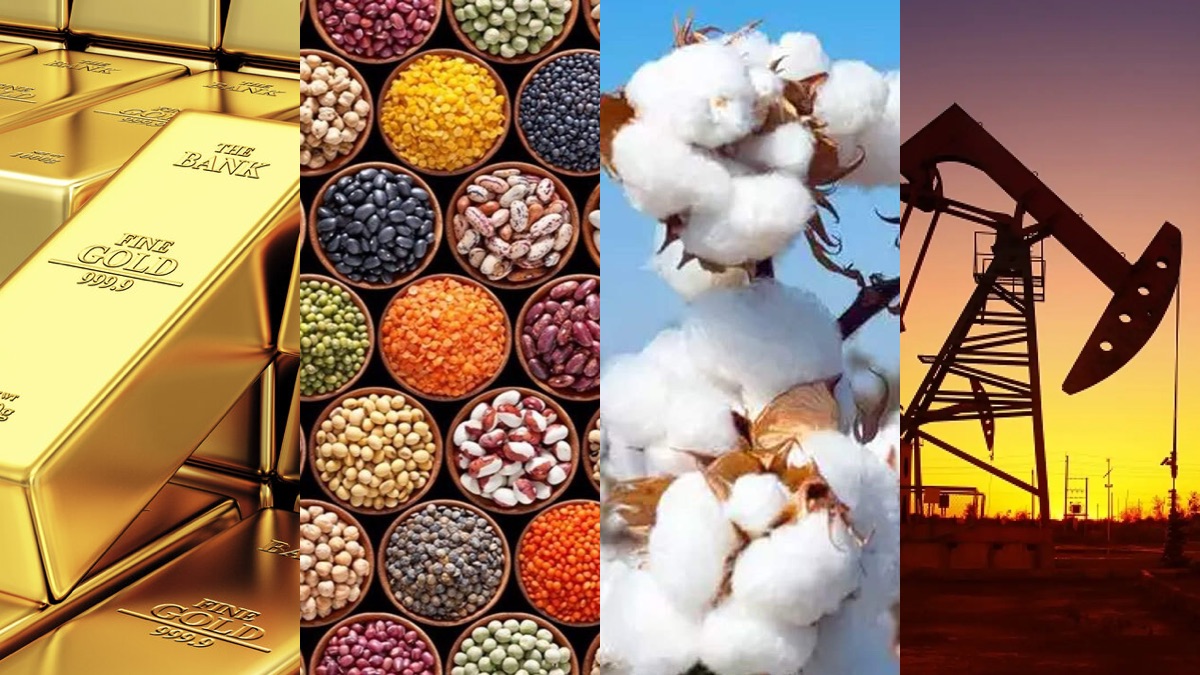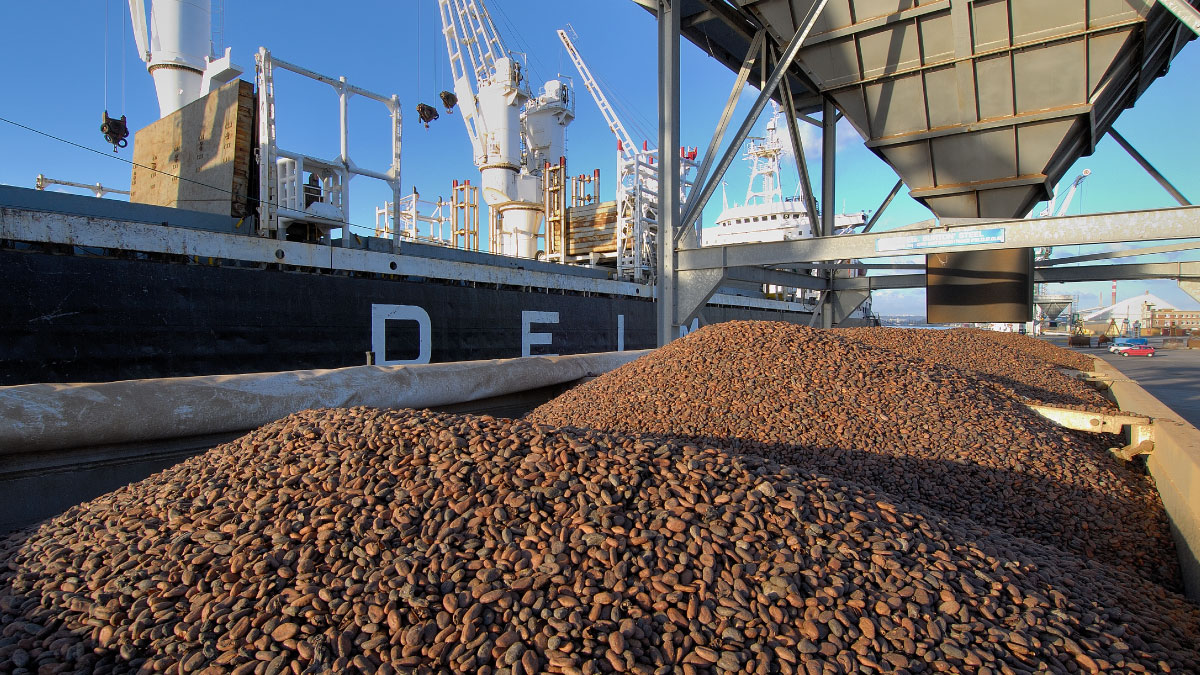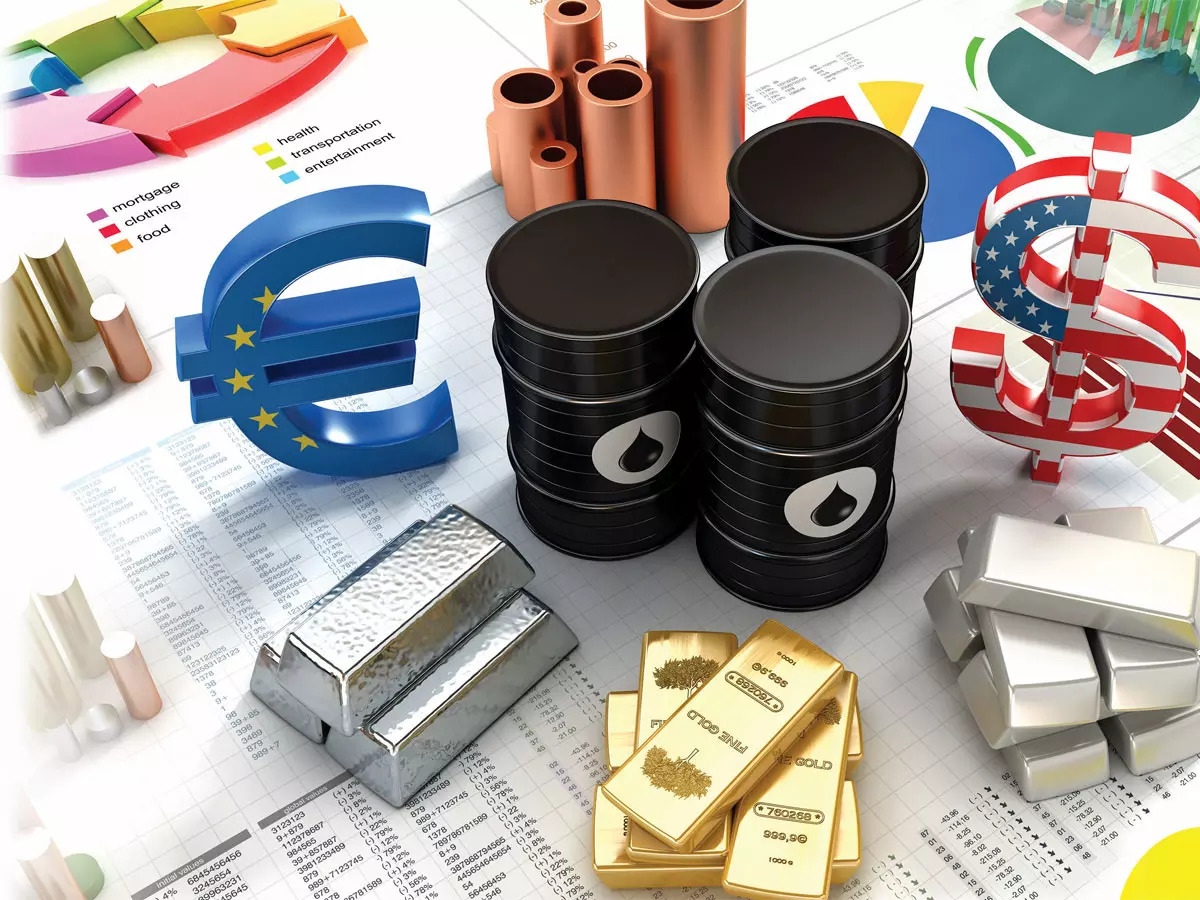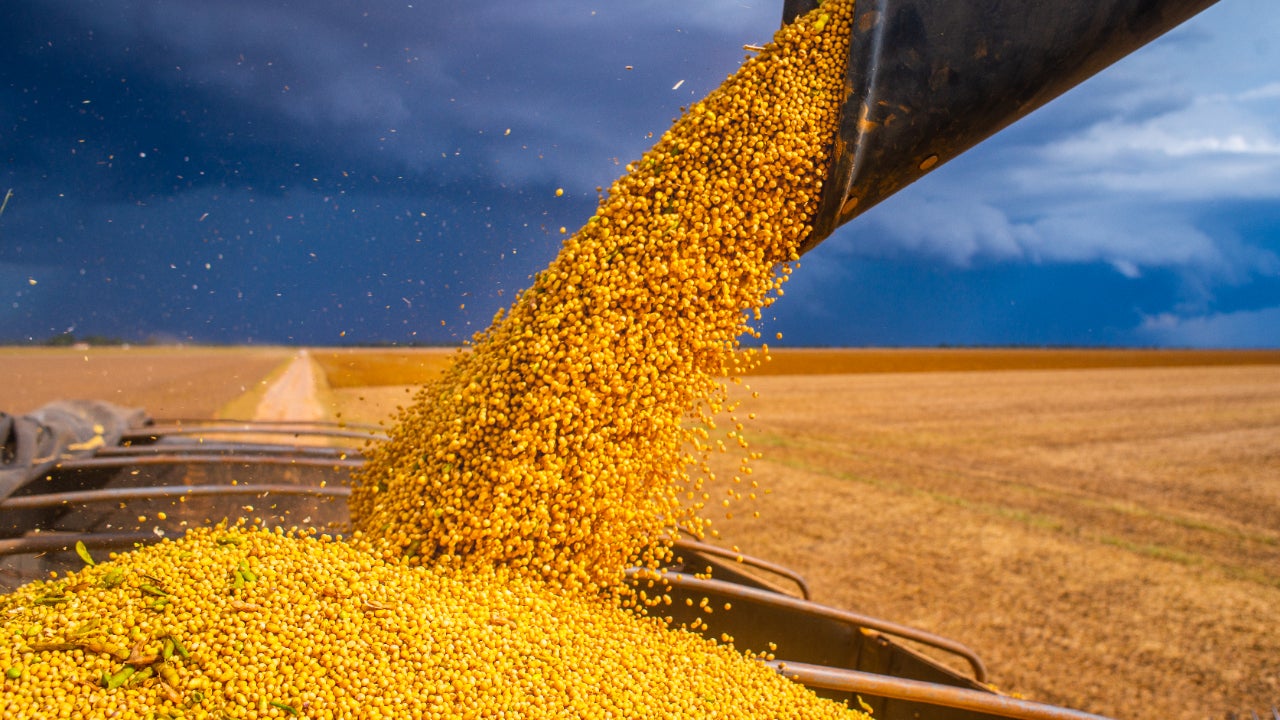All details about commodity investment, should your investment portfolio include commodities.

All details about commodity investment, should your investment portfolio include commodities.
Investment in Commodities
Any product or service that may be traded for other goods and services in the marketplace is known to be a commodity. A commodities market is a location where these products and services can be purchased, sold, or exchanged. Commodities include all perishable and non-perishable products that may be exchanged and hence fall under the concept of a commodity.
In layman’s terms, a commodity investment is one in which the investor invests their money in one or more commodities in the marketplace in order to benefit and get a high return. Let’s take a closer look at commodity investing and the many types of diversification commodities investment alternatives available to investors.
What is Commodity?
Before stated, a commodity is a good that may be traded for other products of the same sort. Commodity Exchanges have existed since the dawn of time, far before stock trading. Commodities are important raw resources that are used to make a variety of goods and services that are then sold on the market.
Commodities help diversify an investor’s portfolio since they are the polar opposite of buying equities on the open market.
What is the commodity market?
A commodities market is a marketplace that allows people of a country to Exchange commodities for rapid delivery. The following are the main advantages of commodities investing in the market:
- Short-term and long-term items can both be invested in.
- It contributes to portfolio diversity.
- It gives you a leg up on the competition when it comes to resisting the economy’s inflation rates.
- Risk mitigation is a term that refers to the process of reducing the risk that is involved.
Commodities We Consume in Everyday Life
Commodities are commodities that corporations, governments, and individuals consume. Commodities are resources that are collected and sold that are naturally grown or arise naturally. Precious metals, grain, wheat, and oil are examples of commodified products that we use on a daily basis.
We have a plethora of knowledge about many of these commodities since most people are regular consumers of goods. Consider leveraging the everyday experience you gain being a commodities consumer to refine your investment capabilities and expand your nest egg if you’re interested in investing.

Here are some of the most usual commodities that have securities traded by investors:
- Energy
- Precious metals
- Other metals
- Grains
- Soft commodities
- Animal proteins and products
Energy
We use fuel in our automobiles, heat and cool our houses, and rely on electricity for a variety of tasks on a daily basis. Crude oil, petroleum derivatives like gasoline and heating oil, and natural gas are all critical components in our everyday life.
Energy commodities are often highly liquid (easy to buy and sell) on Futures Exchanges, with ETF and ETN products that mimic price movements (price variations) in the futures and physical markets.
Precious Metals
Every day, gold, silver, platinum, and palladium play a role in our lives. We are precious metal consumers if we wear or buy jewelry. When we drive a car, the catalytic converter most often contains valuable metals with high melting points.
Other Metals
When we turn on the water faucet, the water travels through copper-containing pipes. Steel, zinc, nickel, and tin may be found in our houses and automobiles. We use aluminum foil to wrap leftovers and have metal cladding on our homes. Batteries using lead or other metals are used to store energy.
Agricultural Products
Wheat is the most common component of bread. Corn is an important biofuel in the United States, and an important source for people and the animal proteins we consume. When we fill up our Automobile with gas, a percentage of it is corn-based ethanol. Soybean-based mayonnaise, salad dressings, and cooking oils are all consumed.
Soft Commodities
Many of us begin the day with a cup of coffee, which we may sweeten with sugar—both soft goods. We consume orange juice, eat chocolate, and dress in cotton.
Proteins from animals
Whether it’s a steak, burger, or hot dog for supper, it all starts with cattle traded on futures markets. On the hog market, pork chops, bacon, and ribs are all commodities.
Industry Knowledge About Commodities
Without giving it any attention, you probably already have a fair understanding of at least one commodity from your daily or professional life. The following are some commonly traded commodities and their trading symbols:
Gold (GC)
Crude oil (WTI)
Rough rice (ZR)
Corn (EMA)
Wool (ASX)
Commodities are simply raw resources that are used to create, transport, and consume commodities.
Truck drivers, for example, monitor diesel and gasoline costs on a regular basis. Those who make sweets or sweet foods are well aware of the expense of sugar. Copper and timber prices are closely monitored by construction companies. Focus on commodities where you already have a basic grasp if you have expertise with commodities through a relevant job.
How to Invest in Commodity Market?
All Commodities Exchanges in India are governed by the Commodity Derivatives Market Regulation (CDMR), overseen by the Securities Exchange Board of India (SEBI), which is now combined with the Forward Market Commission 2015.
The following four Commodity Exchanges oversee all commodities in India:
- National Commodity and Derivatives Exchange (NCDEX)
- Multi Commodity Exchange (MCX)
- National Multi Commodity Exchange (NMCE)
- Indian Commodity Exchange (ICEX)
Types of Commodity Exchange
Commodity traders can be accomplished in two ways:
Physical goods
Commodity brokers and institutional investors trade physical items. Their main aim is to resale the commodities on the open market.
Derivatives Contracts
A derivative is a polar opposite of a physical, and all transactions are conducted online using digital contracts. It is a new manner of doing transactions that is simple and convenient without the use of physical establishments.
Type of Traders in Commodity Investment
There are two types of traders in the commodity market based on operations:
Hedgers
Rather than engaging in current market exposures with traders, hedgers engage in future contracts. The present market rates have no effect on hedgers and the rate at which they trade with investors because of futures trading.
Speculators
Speculators are investors that seek to benefit from current commodities market conditions. Investors forecast future contracts based on several elements in the commodities market and make investments appropriately.
Price Determination in Commodity Exchange
The price of a commodities investment in an economy is determined by a number of variables. The following are some of the most critical elements in influencing commodities market prices:
The Market’s Supply and Demand
The term “increased demand” refers to an increase in the price of a product due to more demand and shorter supply. The ongoing fight between supply and demand is exhausting, and small investors prefer to stick to safer investment alternatives rather than monitoring the commodities market daily.
The Global Situation
Any action taking place wherever on the planet will have a direct influence on the selling and purchase of commodities. For example, the United States is the world’s largest supplier of gasoline. Any severe unrest in the United States will have a direct impact on the price of gas both globally and domestically.
Market Outlook
Because big price movements in certain commodities, like precious metals, are rare, investors are increasingly turning to commodity investments in response to stock market volatility. When compared to the stock market, commodity investments are consequently thought to be a safer investment alternative.
/ETF-and-ETN-commodity-piece-for-About-56a1a76a5f9b58b7d0c1577b.jpg)
External Factors
The price change of a commodity in the market is influenced by its production. A rise in the cost of manufacturing, for example, has an impact on the selling price of the commodity, changing the equilibrium.
Should Your Investment Portfolio Include Commodities?
Commodities are tangible items, like cattle or precious metals, that may be consumed directly or used to create other products. They’re growing increasingly popular being an investment option. It may be prudent to incorporate them into your long-term investment strategy. However, you should be prepared.
The Basics of Commodities in a Portfolio
Investing in commodities vs. speculating on them is an important distinction. If you wish to invest in this method, you can consider creating a commodities Trading Account and trading futures contracts. However, starting a Trading Account without a track record, training, or a strategy is more speculative than investing.
Learning how to trade and generate money over time often requires some time, money, and effort. You should only trade self-directed commodities with money you can afford to lose, not money you rely on until you’ve learned the ropes.
Commodities probably be one asset in a long-term portfolio that you plan to use for a specific aim, like income to help support your retirement. Using this strategy, you would invest a percentage of your wealth in commodities. You might invest 5% to 15% of your portfolio in commodities. However, pick just those around in 20 to 30 years.
How to Invest
Commodities can be purchased directly. This method entails purchasing the things yourself. You may put your money into mutual funds. Invest in mutual funds that are made up of the shares of companies that deal with specific commodities to gain exposure.
You probably put your money into futures contracts or exchange-traded funds (ETFs) (ETFs). This includes trading commodities or commodity index ETFs, and futures contracts (agreements to trade for a predetermined price and at a specific date in the future). Unless you hire a professional to trade managed futures on your behalf through an account, this strategy probably be the riskiest.
The Benefits of Adding Commodities
A commodities portfolio provides a number of benefits. Commodity prices often rise in response to increasing demand. As supply grows, it decreases. Depending on the market, this form of the portfolio probably provide you with more important returns than an asset allocation of stocks and bonds could.

Prices of commodities do not necessarily move in lockstep with those of the stock market. Companies can go bankrupt, but goods cannot. You may protect yourself against important stock market falls by investing a percentage of your portfolio in commodities rather than only in stocks and bonds.
A commodities portfolio may help you weather inflation without suffering the same losses being a stock and bond portfolio. Commodities have historically done well during inflationary periods, even when equities and bonds have declined in value.
The Risks of Adding Commodities
Commodities are more volatile than other investments since supply and demand determine their pricing. Because of the volatility, you may lose a lot of money when you lose it.
A classic mutual fund could own stocks from a variety of industries. A commodities fund, on the other hand, may comprise fewer and less varied securities, giving you exposure to only a few industries.
Just because a commodity is in demand does not guarantee that the investment will do well. Opening a commodity account and trading futures contracts on your own should not be part of a strategy for constructing a retirement portfolio that will provide you with a steady stream of income in the future.
Options for Commodity Investments
To include commodities in your portfolio, you can consider a few different forms of investments.
Futures that have been carefully managed
Managed futures allow you to trade futures with the help of a money manager. They probably be one of the most profitable methods to invest in commodities. Your money is often placed in a separate account managed by specialists who invest in a variety of commodities with the potential to yield a reasonable return over time. They aren’t linked to other assets, like the stock market. This provides a high level of variety.
A trend-following method is often used by these futures fund managers. This is a fantastic technique to capture big swings in commodity prices, whether up or down. In their managed accounts, some investors even diversify inside futures funds. Investing in a trend-following fund and a fund that trades commodity ranges may make sense.
ETFs that invest in commodities

Commodity exchange-traded funds (ETFs) are another option. There are a number of ETFs that invest in several commodities or commodities-related industries. Some people exclusively invest in one type of commodity. Others put their money into a specific commodities industry.
You have the freedom to invest in whatever makes the most sense for you. When selecting these ETFs for the long run, it’s better to go for a group that is well-diversified. Commodity stocks have become one of the most popular investment options in recent years. Stocks in the gold mining industry are included in the most popular.
What Makes for Good Commodities—and How to Trade Them
When commodity traders are seeking a safe haven for their funds, they often choose only a few commodities depending on their risk tolerance, available cash, and professional understanding.
Commodity trading entails more than dabbling in the stock market, so be prepared to invest some time in learning not just about the commodity but about how it moves within the market. Because commodities are so unpredictable, it’s a good idea to work on your mental health, because this is generally a big impact when trading them.
Start with commodities in which you have some professional experience if at all feasible. After that, it’s a good idea to assess, then re-assess, your risk appetite.
How to Select Good Commodities to Trade
The majority of professional traders focus on one or a few commodities to trade. This strategy makes sense since you get to know all the minor details of a commodity that many traders overlook.
Oil and gold are popular transactions, while corn and soybeans remain alternate, less thrilling choices. Because market sentiment may shift dramatically in a short amount of time, coffee futures can be traded for a fast scalp.
Many people trade oil and the e-mini S&P for day trading objectives. Oil is a widespread trade on Fridays when the CFTC releases its speculative net positions for Crude Oil, and Baker Hughes releases its U.S. oil rig count.
The liquidity in these markets is unbeatable, and there are plenty of trading chances. However, there is a cost to liquidity: the overcrowding of hot transactions.
Overall, trading liquid commodities is preferable since specific trading setups will occur more frequently. Because markets and trade circumstances change year to year, some commodities may provide attractive trading possibilities one year but not the next. Commodities also need constant monitoring since worldwide supply may alter in minutes.
Volatility of Commodities

Next, be sure that any commodities you trade are within your risk tolerance. Some commodities have tiny daily fluctuations, whereas others have large swings.
Also, keep in mind that not all commodities have the same level of risk. When choosing a commodity to trade, make sure the level of risk is appropriate for you. This is critical because commodities exhibit extreme price volatility even when there is only a rumor of big news.
Check the futures margin to see how volatile each commodity is. This is the amount you must deposit being a good-faith deposit on each futures contract you open with a Futures Exchange. The margin is determined by several variables, the most important of which is the daily price movements of futures contracts. When market circumstances change, the Exchanges modify these values, necessitating constant monitoring.
Some commodities may be unavailable for trading. You won’t be able to hold a futures contract that demands a $7,500 margin if your account is a mere $5,000. So, unless you trade futures options, which is an even riskier transaction that you shouldn’t try until you’ve tested successfully in simulated trades and attained professional levels of emotional control and trading insight, you may rule out those commodities.
Some commodities are difficult to trade since they aren’t highly active. Liquidity should be taken into account. It’s a dreadful situation when you can’t get out of a deal that is no longer profitable.
The Pros and Cons of Speculation in Commodity Futures
The function of the commodities speculator has long been a source of contention among market regulators, policymakers, and even other market players. A speculator is a term with a wrong meaning. However, this is often due to misunderstandings.
Learn more about speculators, including their operation and their benefits and drawbacks.’
What Are Speculators?
A speculator in the realm of commodities is a party that does not handle the actual physical commodity. Instead, they take a financial stake (long or short) in the asset in the hopes of profiting from a price change.
There are many different types of supposition. A market maker is a party who always displays a bid and provides a price. This is a sort of speculator who believes that setting a two-way price will allow them to profit or profit from the spread between the buy and sell prices. A speculator is someone who invests in commodity production.
Consider the situation of a gold prospector. Assume they invest millions in a mine in the hopes of gaining gold at a cheaper cost than the market rate. They are undoubtedly speculators, betting on a favorable return on their investment.
Finally, a proprietary trader may seek to buy cheap and sell high in several assets, including commodities.
What Impact Do Speculators Have?
Here’s a tale on Paul Jacobson, who was Delta Airlines’ senior vice president of finance. Years ago, he expressed his thoughts on speculators. He said in an interview that rising oil prices were the consequence of speculators driving up the price of oil to earn phony gains at the cost of customers. He urged legislators and regulators to take action to address the issue as he viewed it.
Here’s what Jacobson didn’t include in his article: In the market, a speculator probably take long or short bets. In any case, the speculator must finally close off their position by selling longs and repurchasing shorts. This set of market players has a zero-sum effect on markets in the long run.
What Are the Advantages?
In commodities, the speculator does contribute something valuable to the table. It’s important to remember that commodity producers must sell and consumers must buy. However, such producers often may not be willing to sell at times or at prices that correspond to when customers want to buy. Often, the existence of a speculator in the market fills this need. The speculator increases market liquidity.
What Are the Disadvantages?
The ongoing argument about the benefits and drawbacks of speculation is intriguing. Proponents of a limit on speculative behavior in commodities markets are most outspoken during bull markets when prices are rising.
Some claim that speculators increase the cost of raw materials for the end buyer, the consumer, by driving up prices. When prices fall, however, speculative activity in markets is potent. As prices fall, speculative behavior may temporarily cut costs further, benefiting consumers at the expense of producers.
There would be no need for speculators in an ideal society if commodity producers could sell directly to commodity consumers at all times. The world, however, is far from perfect. Speculators increase market liquidity. As long as they follow regulatory guidelines, these actors add a lot to commodities markets. Speculators supply liquidity to markets, which helps them run smoothly. As a result, they can work efficiently for all parties.
The argument about speculators’ position in markets will undoubtedly continue. It is critical to recognize that contemporary markets’ efficient operation depends on this set of market players. After all, without liquidity, everyone would face higher costs over time, both producers and consumers.
Commodity ETFs
Commodity exchange-traded funds (ETFs) are a straightforward approach to including resources in your financial plans. You’ll gain access to their pricing and performance without really owning the help. These exchange-traded funds (ETFs) are made up of equities, futures, and derivative contracts that follow the price of a resource. In other circumstances, ETFs follow indexes.
The iShares S&P GSCI Commodities-Indexed Trust is one of the most popular commodity ETFs (GSG). You’ll hold cattle, industrial metals, and Agricultural Assets Futures contracts. Consequently, you’ll receive exposure to a variety of commodities, but you won’t have metal stacks or cow herds in your backyard.
Should You Buy Commodity ETFs?
These ETFs have the benefit of making trading more available. You’d have to buy commodities futures separately or invest in related derivatives or companies if you didn’t have access to an ETF. You can invest in the commodities of your choice without acquiring a contract or engaging in trade.

You must pick between many futures or enterprises. If you elect to invest in an index, you’ll still have to buy all the securities in the index basket to hit a target price. Paying fees probably make it challenging to reach your objectives, but with an ETF, you only have to make one trade at a single price and avoid charges. It’s all ready to go.
ETFs provide a tax benefit over other products like mutual funds since capital gains taxes aren’t paid until sold. 12 You’ll have an easier time trading. Commissions and management fees will be cheaper.
Before you trade any commodities ETF, Make sure you do your homework. Keep track of the price of specific resources, like coal. Keep an eye on how some of the most popular exchange-traded funds (ETFs) respond to market circumstances.
Commodity ETFs made mostly of futures contracts have received a lot of flak for their inability to track volatile commodities. When you have a strong grasp of how commodities and commodity ETFs interact, you may start employing these ETFs and ETNs in your investment arsenal.
Some tactics probably assist you in making your Initial commodity ETF investments. A gold ETF can be sold in a single transaction. If you want to stabilize some gold investments in your portfolio, this can limit your downside gold risk.
An energy ETF can be used to protect both domestic and International Assets against adverse risks. If you’re long a lot of energy equities, sell an energy ETF to reduce your downside exposure.
Foreign investments in a country where coal is a major source of revenue present an chances to sell a coal ETF to hedge against the downside.
Commodities ETFs that trade in the opposite index direction are known by the term inverse commodity ETFs. Inverse ETFs are a fair option if you want to sell a commodity but can’t short ETFs owing to leverage or Account limitations. If you don’t want to liquidate your ETF positions but want short-term exposure or protection, trading ETF options might be a viable solution.
Commodities can aid in the diversification of a long-term investment portfolio. If you understand the difference between speculation and investment, they may help you improve your profits. You should be aware of the benefits and disadvantages.
Opening a commodity Trading Account without a strategy should be considered gambling. Risk capital should be employed exclusively.
Long-term growth investors should commit a percentage of their portfolios to commodities investments that will still exist in a few decades. Investing in commodity funds through managed commodity Accounts allows you to gain exposure while taking on less risk than doing your own commodity trading.




